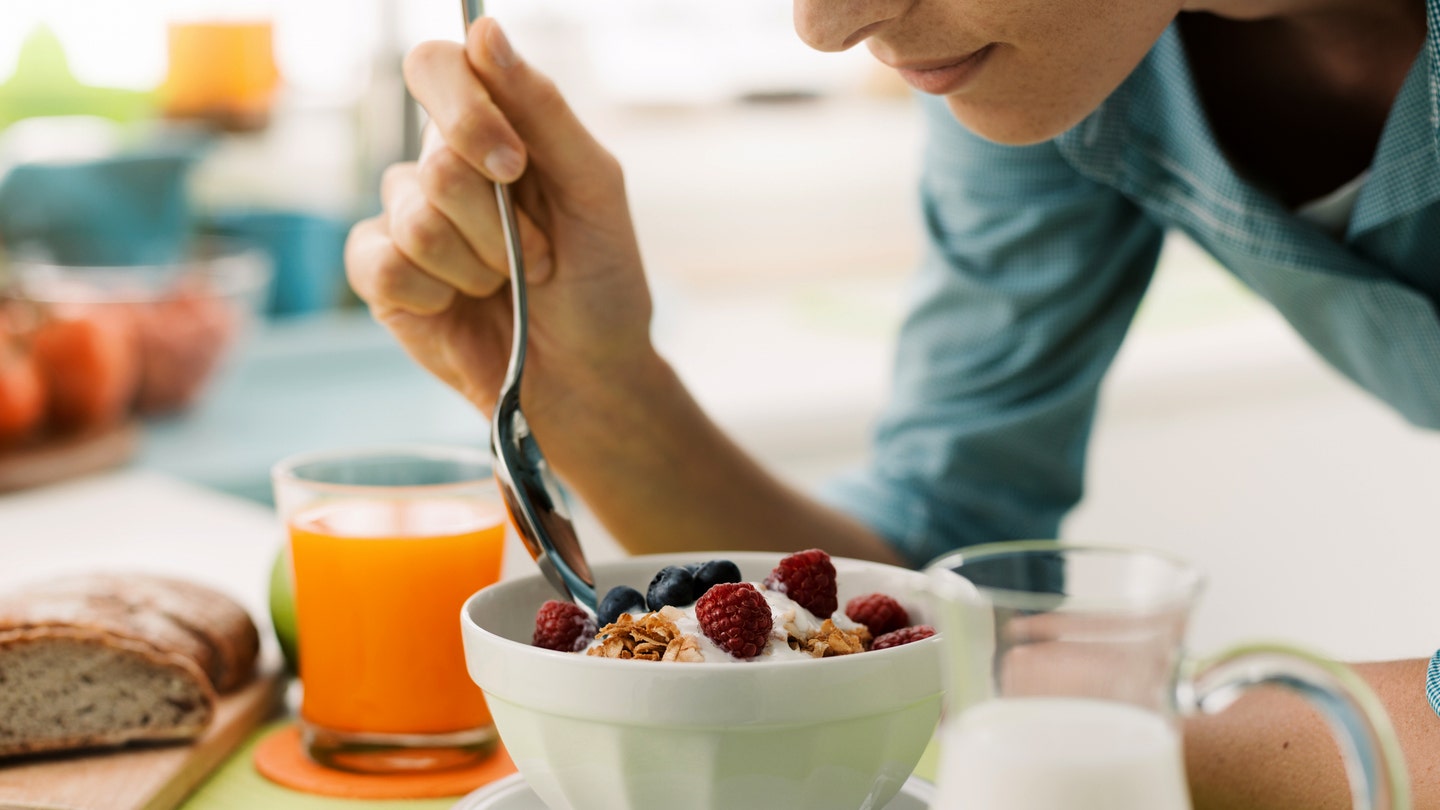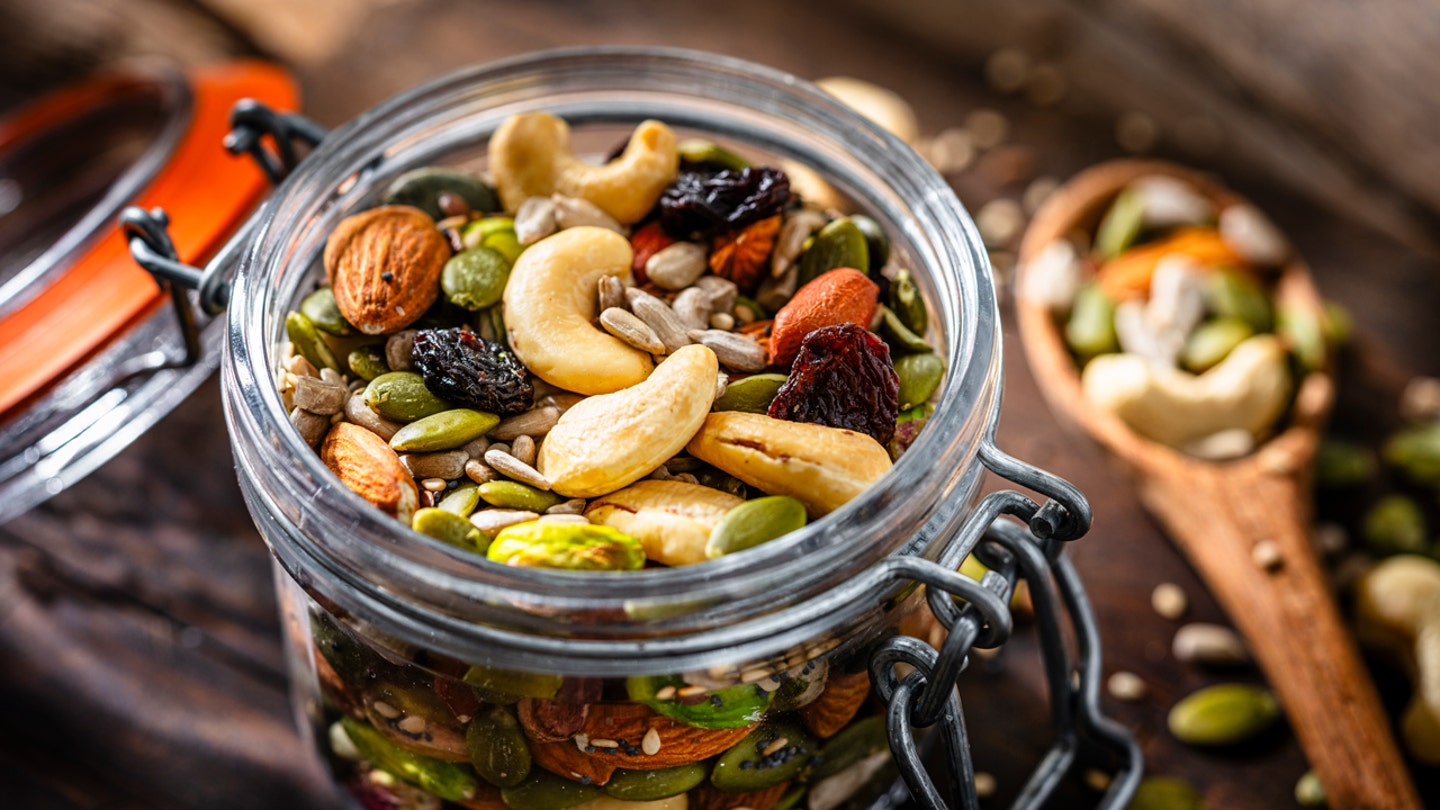NEWYou now have the option to listen to news articles!
A new practice known as “fibermaxxing” has been gaining popularity on social media as a healthy nutrition tip.
This trend involves increasing fiber intake by incorporating foods like leafy greens, seeds, nuts, fruits, and other high-fiber options into meals throughout the day.
According to creators on TikTok, boosting fiber intake has led to reduced bloating and improved digestion, as fiber is recognized for its ability to promote a healthy gut microbiome.
Robin DeCicco, a certified holistic nutritionist in New York, stated in an interview with Fox News Digital that increasing fiber intake can be highly advantageous.
“As a health professional, I am pleased to see that people are becoming more mindful of the importance of fiber,” she said.
Experts emphasize that fiber is beneficial for gastrointestinal and cardiovascular health, but it may not be suitable for everyone. (iStock)
“From gastrointestinal health to cardiovascular health, weight management, diabetes and cancer prevention, feeling satiated throughout the day, and reducing cravings for sugary and starchy foods, there are numerous advantages to increasing fiber intake.”
The USDA Dietary Guidelines recommend a daily fiber intake of 28 to 45 grams for men and 22 to 28 grams for women.
DeCicco suggests adding color to each meal and using nuts and seeds as “accessories” to easily incorporate fiber throughout the day.
“Color is synonymous with fiber – consider having berries for breakfast, snacks like carrot and celery sticks with pumpkin and sunflower seeds, or apple slices with natural peanut butter, and including side salads with meals,” recommended the nutritionist.
Is there such a thing as too much fiber?
While increasing fiber intake can be beneficial, DeCicco cautioned that excessive fiber consumption may lead to complications for some individuals.
“Health is individualized,” she explained. “If you have certain pre-existing gastrointestinal conditions, it is important to make adjustments before following the fibermaxxing trend.”

A nutritionist advises individuals with pre-existing gastrointestinal issues to make adjustments before embracing the fibermaxxing trend. (iStock)
“If your body is not accustomed to high fiber intake and you suddenly overload on fiber, you may experience bloating, cramps, and constipation,” she warned.
DeCicco recommended spreading out fiber consumption rather than consuming large amounts in one sitting, as fiber can accumulate in the stomach and cause discomfort.
“If you have certain pre-existing gastrointestinal conditions, this is not a trend to follow without making adjustments.”
“This is why it is crucial to gradually introduce fiber into your diet,” she emphasized.
“I always advocate for taking ‘baby steps’ when incorporating fiber into a client’s diet. Slow progress can lead to long-term health benefits.”
For individuals who struggle to digest raw vegetables, DeCicco recommended lightly cooking them through sautéing, steaming, or roasting to minimize gastrointestinal discomfort.

The nutritionist suggests incorporating high-fiber ingredients like nuts and seeds into meals. (iStock)
“It is common for individuals to struggle with digesting large salads and raw cruciferous vegetables such as broccoli and cauliflower,” she noted.
“If you are aiming to increase fiber intake by consuming more vegetables but experience bloating, try switching to cooked vegetables to see if it makes a difference.”
If constipation occurs due to excessive fiber consumption, DeCicco recommends staying hydrated with water to facilitate the movement of fiber through the digestive tract and soften stools.
“When increasing fiber, it is essential to increase water intake throughout the day,” she advised, cautioning against the dehydrating effects of caffeinated beverages.
“Adding lemon or lime to water can aid in absorption, as can electrolytes,” DeCicco added.
Angelica Stabile is a lifestyle reporter for Fox News Digital.





